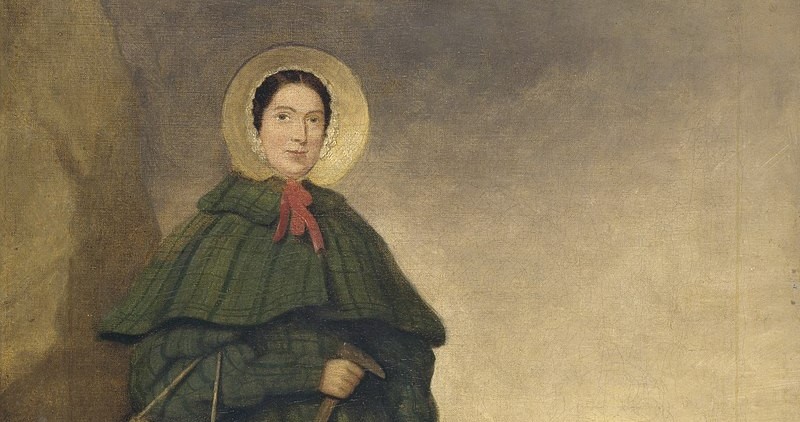
To anyone with an interest in fossils and palaeontology, Mary Anning is now a fairly well known name. Over her lifetime, her discoveries became invaluable in the scientific community and her expertise sought after, however she was rarely credited. In recent years she has become known as one of the most influential women in British scientific history.
Born on the 21st May 1799 in Lyme Regis on the Dorset coast, Mary grew up fossil hunting. Her father, Richard Anning, a poor cabinetmaker, was himself a fossil hunter who sold the fossils he found to supplement the family income. After Richard’s death in 1810, Mary, her brother, and her mother continued to collect and sell fossils to scholars to help stave off destitution.
Teaching Idea: Go outside, maybe to a location like a park, wood or beach, or even just around the school playground, and collect some things off the ground – anything from pebbles & leaves to litter (remembering to always be careful with litter). Can you make this into something someone might want to buy? (encourages creativity & empathy)
Richard and his family initially only knew the fossils they found and sold as “curiosities”. It was young Mary that took an interest in these from a scientific perspective. Although she had no formal schooling, she taught herself geology, anatomy and palaeontology as well as becoming adept at scientific illustration.
Between 1809 and 1811, when she was only around 12 years old, Mary worked to excavate the first complete Ichthyosaurus skeleton known to the scientific community. Although Mary is now often credited with the discovery of this specimen, it is believed that her brother Joseph first uncovered it. This fossil was 5.2 metres long and is known for being so well preserved that evidence of its last meal can be seen in it’s ribcage.
At some point, although it is not clear when, Mary’s brother stopped fossil hunting and went to work for an upholsterer. Mary’s fossil hunting companion became her dog Trey who you can see in the above painting.


In 1817, the Anning family’s fossils attracted attention of Lieut. Col. Thomas Birch. Birch was a geologist & fossil collector who purchased a number of specimens from Mary, and went on to auction these off to further financially aid Mary & her family.
Later, around 1823-4, Mary made her most famous discovery in the form of the first intact Plesiosaurs skeleton. Initially this huge find was disputed and considered to be a hoax or fake. The find was eventually authenticated by French zoologist Georges Cuvier.
Teaching Idea: Get some pictures of skeletons of various creatures – both alive and extinct. Put some together piecemeal as fake creatures and keep others whole and see if the children can work out which ones are real and which are fake. Use some really unusual creatures to make this fun! (encourages critical thinking)
It was as a result of Cuvier’s validation of the Plesiosaurs the Anning family and their finds gained repute in the scientific community. This helped the family sell more fossils and gave Mary more credence as a fossil expert and scientific illustrator, and gave her the opportunity to correspond and interact with the scientific community.
In 1828 Mary uncovered the skeleton of a flying reptile. This pterosaur, later renamed Pterodactyl, was the first specimen to be found outside Germany. Some of Mary’s other finds included many other Ichthyosaurs, a squaloraja (a kind of fish thought to be an evolutionary transition between sharks and rays), and some coprolites (fossilised poo!).
Mary died in 1847, mostly uncredited for her work because she was a woman from a poor background. It is since her death that we have become aware of the extent of her contributions to Palaeontology, Geology and the understanding of early evolution. Many of the fossils she excavated can be seen at museums – particularly the Natural History Museum in London and the Oxford University Museum of Natural History.
Teaching Idea: Why not arrange a field trip to the Natural History Museum in London to look at Mary’s Plesiosaur?



Leave a Reply
You must be logged in to post a comment.